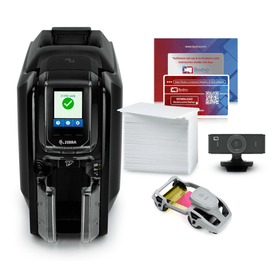It makes operational and financial sense for an organization that prints and issues cards frequently to have in-house printing machines and supplies. Fortunately, it does not have to be costly to maintain your own ID card printing system. Here, we will discuss how to keep your printing costs in check.
Use The Printer That Suits Your Needs
ID card printers are available at various price points and models. Before choosing a specific model or brand, assess your requirements about the set of features you need. For instance, will you issue cards that have magnetic stripes? If so, a printer that has an in-built encoder is perhaps your best option.
Investing in a printer, which already has the features that you require, will keep you from buying new equipment down the line. Conversely, when you can predict that your printing requirements will change down the line, purchasing a product that allows modular upgrades can give you considerable savings.
Some people pay more attention to the retail rate of the product than everything else. Do not make that mistake. Instead, focus on the cost of ownership per annum since it can impact your longer-term printing costs more than your printer’s price.
Purchase The Right Supplies
Some identity card printing supplies, like cleaning kits and ribbons, are printer- and brand-specific. For instance, it is possible to use only genuine Zebra ribbons on Zebra printers. So, note down the model of the printer that you use when you order supplies to ensure that you avoid a costly mistake.
When purchasing plastic cards, it is possible for you to choose between generic PVC-based cards and branded cards. However, in the case of generic cards, confirm that you do business with only a trusted vendor since certain plastic cards are not of good quality and can contribute to poor printouts or card jams.
Laminate Your ID Cards
Lamination extends the usable duration of an ID card as the process seals its printed surface, thus keeping it safe from wear due to constant swiping. Lamination also protects the cards from smudging or fading due to contact with abrasive/liquid materials or exposure to UV rays.
Laminating printed ID cards can also eliminate the need to replace damaged cards, thus saving your business enterprise a considerable amount. Besides, it can reduce the time that workers spend printing ID cards again, thereby making them more productive.

















